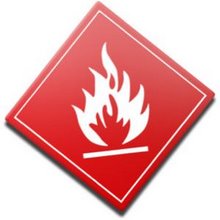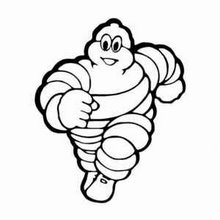AP Wire 06/17/2006 Simulators train future coal miners about underground dangers
HAZARD, Ky. - As the underground miner tries to cut away coal from the ribs of the mine, he makes a wide turn and bangs the hauler against the wall, injuring a fellow miner. It's a painful scenario that many miners have seen before.
But this time it's just a simulation.
The mine simulators at Hazard Community and Technical College in eastern Kentucky give students interested in a career in mining or rookies in the industry a taste of underground dangers without risking their lives. After the disasters this year at the Sago mine in West Virginia and the Darby mine in southeastern Kentucky, experts say the new technology is a way to improve training for miners.
"It's going to shorten that learning curve a long way, and it's in a safe environment," said Frank Winstead, a coal mining instructor at the college and a 25-year mining veteran.
Three-dimensional mine simulators have gained popularity within the coal industry and are being used in different forms from Appalachia to Australia. For example, the U.S. Mine Safety and Health Administration uses a simulation lab at its academy in Beckley, W.Va., which creates smoky or gaseous conditions for students practicing rescue techniques.
In a statement, MSHA said simulators like those offered at Hazard have been considered for the National Mine Health and Safety Academy, which trains mine inspectors, miners and others in the industry. The agency said it has held off on using the simulators because "they are very expensive and are limited in the number of students that can be trained."
The Hazard college invested about $530,000 for the four simulators, which include two surface mining machines - a haul truck and a dozer. The money came out of $3 million the state appropriated last year to the Kentucky Coal Academy - a program made up of four state community and technical colleges that offer courses on coal operations.
The simulation of a "continuous miner" machine, which cuts coal from the ribs of a mine and hauls it, is one of four simulation software programs to be offered this fall at Hazard. The other underground simulator is a roof-bolting device which teaches students how to drive protective plates into the ceiling of mined out areas.
The images on the computer programs are three-dimensional and can be viewed on a large screen, a standard computer monitor or a virtual reality headset.
Industry experts see the simulators as a way to attract more people into mines as roughly 50 percent of the current mine work force prepares to retire within the next decade.
"We are on the eve of retraining our existing work force and of replacing a large segment of our work force with new miners," said Chris Hamilton, head of the West Virginia Coal Association and a member of a mine safety task force assembled after an explosion at the Sago mine killed 12 miners in January.
Last month, an explosion killed five miners in a Harlan County mine.
There are about 15,500 underground and surface miners in Kentucky, a 25 percent drop from the state's mining work force 10 years ago. Meanwhile, Appalachian coal production is gaining momentum.
The region increased its production by 2 percent in 2005, with Kentucky miners producing an additional 4 million tons over the last year - bringing the state's total to 120 million tons.
Coal production in the United States reached a record level in 2005, ending the year at 1.13 billion tons, according to preliminary data from the Energy Information Administration. Production in 2005 was 21.2 million tons higher than the 2004 level of 1.11 billion tons, and surpassed the prior record set in 2001 by 5.6 million tons.
"In the big scope of things, our training on simulators will show new miners how the industry has changed and the job has become computerized," Jay Box, president and CEO of Hazard Community and Technical College, said. "That will increase the desire to enter the field."
Even so, Winstead feels better knowing that the next generation of miners can make their bad decisions or careless mistakes - which could prove fatal in reality - without endangering themselves or damaging millions of dollars of mining equipment.
"It's a whole lot safer to run it on a simulator than underground the old way," he said.
Plus, the students learn what to do when disaster strikes.
The instructors can challenge the future miners by simulating machine failure, poor visibility conditions, gas leaks and other emergencies.
The simulators measure a student's performance by recording all his actions and any operating errors. For example, in one scenario, the miner uses the wrong drill bit to install a roof bolt, resulting in a flashing red caution message: "WARNING - Drill bit too long."
"This generation of simulators really do mimic the precise movement and features of actual machines," said Hamilton, adding that West Virginia's two coal mining academies have employed both underground and surface mining simulators.
The experts noted that the simulators are supplements to traditional training and are not intended to replace mine training by certified firms or the state.
Miners are required to have 40 hours of "new miner" training before even entering a mine, where they go through another 45 hours of supervised training on equipment, said Bill Caylor, president of the Kentucky Coal Association.
"I think simulators contribute to overall safety," Caylor said.
Added Hamilton: "They have to be mindful that they are simulators, used to provide basic information, but they don't replace the machine environment completely."
Monday, June 19, 2006
Subscribe to:
Post Comments (Atom)














No comments:
Post a Comment